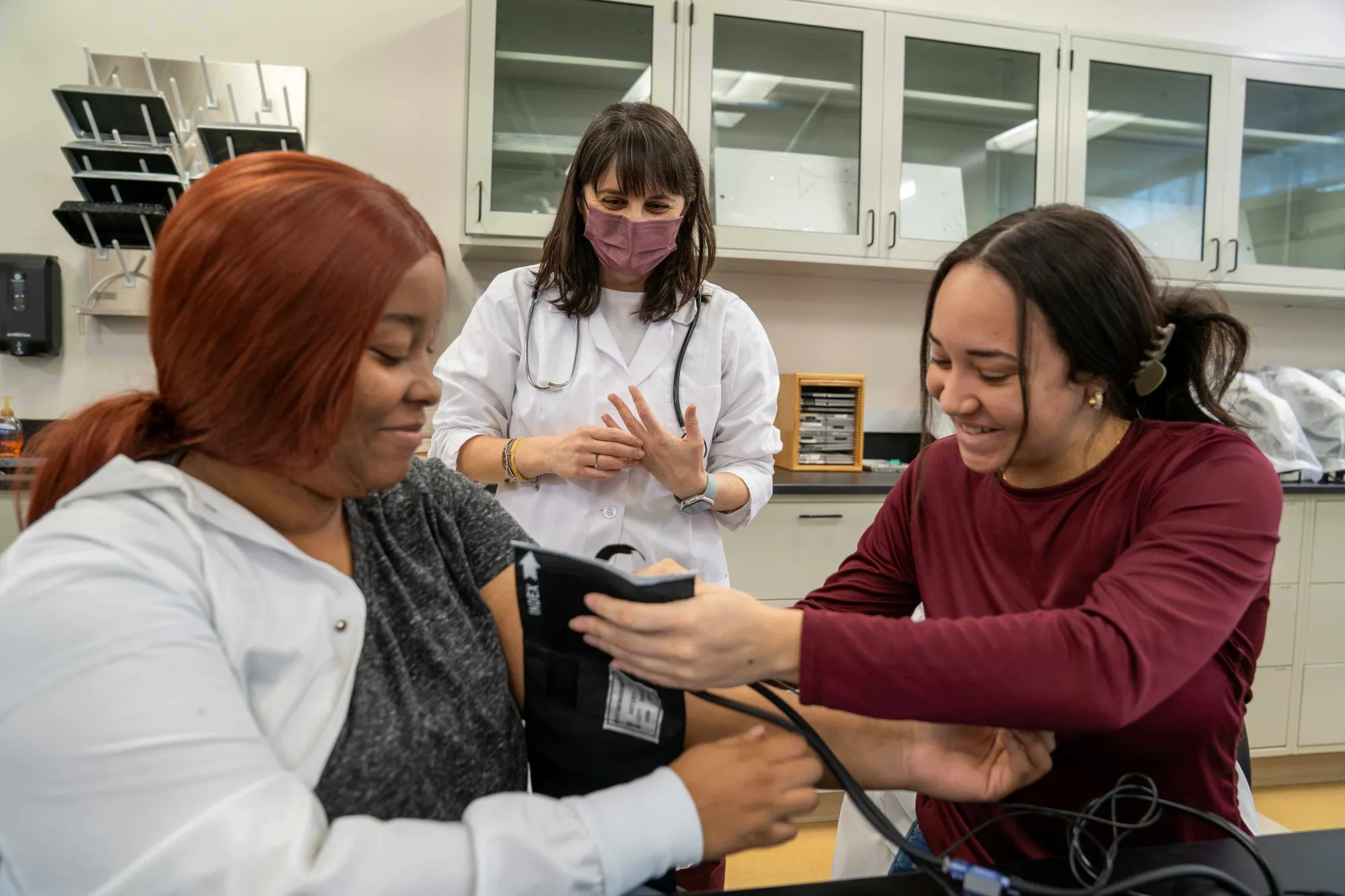Probeware, i.e. equipment and software used with a computer to collect and analyze data, has been called “the least controversial use of technology in science teaching”, and is commonly used in labs across many disciplines, including chemistry, physics, and the life sciences (Champion & Novicki, 2006).

“Computer probeware allows students to experience scientific phenomena firsthand for themselves with the precision and accuracy traditional methods lack.” - Marcum-Dietrich & Ford, (2003).
As identified by Champion & Novicki (2006) and Marcum-Dietrich & Ford (2003), the benefits of probeware are numerous. Probes:
- Are simple to use
- Save time
- Enable quantitative observations
- Connect theory with physical phenomena
- Provide real-time data acquisition
- Produce instant graphs, which can be used as immediate feedback and interpreted to draw conclusions (as reviewed by Champion & Novicki, 2006)
- Familiarize students with equipment they will use in their research careers
In the high school context, the National Center for Education Statistics has previously found that probeware is associated with improved student achievement in science (2001). At college level, multiple individual studies have found experiential and academic benefits for students using probeware to learn physiology.
For example, using an online learning system with PowerLab and associated transducers to collect physiological data in a first-year nursing course at Queen’s University Belfast (McMullan, 2017) was found to enhance learning:
- 84% of students found the system beneficial to their learning
- 78% felt that they related to online course materials better when they had seen corresponding experiments done with PowerLab
- 79% reported the system helping them to conceptualize key concepts
- 88% of students reported understanding concepts when using the system
- 73% believed their learning would be enhanced further if they conducted the experiments they saw themselves
Similarly, collecting and observing EMG recordings in a lecture setting was identified by 86.74% of students to be helpful or very helpful in a medical undergraduate course while learning about skeletal muscle physiology (Mathew et al., 2019), while students in a second-year physiology course identified the ability to represent physiological events graphically on-screen as helpful for understanding (Horrigan, 2018).
Finally, recording blood pressure and heart rate with a finger cuff during graded exercise in a second-year physiology practical aided student learning and was received positively (Hodgson & Choate, 2012):
- 88% of students agreed or strongly agreed that they appreciated the immediacy of the recordings
- 84% gained an understanding of how to record physiological data
- 81% enjoyed the practical
- Students demonstrated a 4% (2009) and 20% (2010) improvement in their pre- vs post-test score, indicating improved understanding of cardiovascular physiology.
Feedback from students at the University of North Carolina at Pembroke using Lt Sensors
“I really enjoyed using the sensors, as it was more hands-on and interactive. They definitely made me more invested in the work I was doing.” - Physiology Student using Lt and Lt Sensors
“...to be able to work hands-on with EKGs, pulse oximeters, thermometers, etc. brought a different type of understanding to the course content.” - Physiology Student using Lt and Lt Sensors

“Traditional laboratories have been taught using oscilloscopes, amplifiers, and balky [sic] chart recorders…When this equipment is replaced by a computer, students easily learn the software and focus on the results rather than the equipment.” (Champion & Novicki, 2006, p. 240).
Evidently, probeware improves student outcomes and allows students to “quickly assign meaning to the data” (Marcum-Dietrich & Ford, 2003), making it an obvious choice in the physiology undergraduate lab.
Now that we’ve seen the evidence for probeware, why not explore the sensor solutions we offer for human physiology lab classes?
Lt Sensors are an affordable, easy to use data acquisition solution for undergraduate physiology laboratories. Students can simply plug the sensors into a laptop or desktop computer, and begin recording their own biological signals directly into Lt.
Our nine advanced sensors connect directly to Lt through the USB connection on your Windows or macOS® device. Students use Lt Sensors to record and analyze their own physiological signals in real time – collecting authentic data for ECG/EKG, EEG, EMG, EOG, spirometry, respiratory rate, and finger pulse experiments.

Lt Sensors are perfect for educators that require new or additional hardware for human physiology courses. Together with our learning platform Lt, these sensors are an integrated data acquisition solution that give students an authentic lab experience, while also allowing flexibility between face-to-face and remote learning.
More about Lt Sensors:
References
Champion, T., & Novicki, A. (2006). Instructional Technology: A Review of Research and Recommendations for Use. In J J Mintzes, & W H Leonard (Eds.), Handbook of College Science Teaching (pp. 233–249). NSTA Press.
Hodgson, Y., & Choate, J. (2012). Continuous and noninvasive recording of cardiovascular parameters with the Finapres finger cuff enhance undergraduate student understanding of physiology. Advances in Physiology Education, 36, 20–26. https://journals.physiology.org/doi/full/10.1152/advan.00097.2011
Horrigan, L. A. (2018). Tackling the threshold concepts in physiology: what is the role of the laboratory class? Advances in Physiology Education, 42, 506-515. https://doi.org/10.1152/advan.00123.2017
Marcum-Dietrich, N. I., & Ford, D. (2003). The Tools of Science: Using computer probeware to enhance students' laboratory experiences. The Science Teacher, 70(2), pp. 48–51. https://www.jstor.org/stable/24155598
Mathew, A. J., Nundy, M., Chandrashekaran, N., & Oommen, V. (2019). Wrestle while you learn: EMG as a teaching tool for undergraduate skeletal muscle physiology teaching. Advances in Physiology Education, 43, pp. 467–471. https://journals.physiology.org/doi/full/10.1152/advan.00029.2019
McMullan, J. (2017). An evaluation of a Technology Enhanced Learning tool (Labtutor) from the perspective of undergraduate student nurses. International Journal of Innovative Research in Medical Science, 2(1), Article 24558737. https://pure.qub.ac.uk/files/123500282/An_evaluation_of_a_Technology_Enhanced_Learning_tool_Labtutor_from_the_perspective_of_undergraduate_student_nurses.pdf
National Center for Education Statistics. (2001). Science highlights: The nation’s report
card 2000 (NCES 2002-452). https://nces.ed.gov/nationsreportcard/pdf/main2000/2002452.pdf

